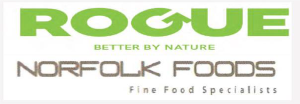Title Page
-
Site conducted
-
Conducted on
-
Prepared by
-
Location
Panel Ceiling Inspection
-
1. Inspect the ceiling area and joints to ensure that the seals are maintained.
-
2. Inspect the general condition of the ceiling for any damage, corrosion, sagging or buckling.
-
3. Inspect the wall intersections and penetrations for any damage, structural stress and<br>penetrations are sealed.
-
Inspect the ceiling panels for water ponding and rust.
Panel Wall and Door Inspection
-
1. Inspect the walls and joints to ensure that the vapour seals are maintained.
-
2. Inspect the general condition of the walls, joints and floors for any damage and corrosion.
-
3. Inspect the wall intersections and penetrations for any damage, structural stress and<br>penetrations are sealed.
-
4. Inspect pressure relief ports for damage, corrosion and ports open and close freely.
-
5. Inspect door frames for damage, corrosion and seals are maintained.
-
6. Inspect general components including hinges, chains, tracks, wheels and safety bells for damage,<br>corrosion and wear.
Risk Control - Storage and Housekeeping
-
1. Are internal storage of combustibles such as pallets or packaging materials greater than 5 meters<br>from EPS panel?
-
2. Are external storage of combustibles such as pallets, packaging materials and waste bins greater<br>than 10 meters from EPS panels?
-
3. Are EPS panels free from damage or penetrations that expose the panel core material?
Risk Control - Ignition
-
1. Are forklift battery charging areas greater than 5 metres from EPS panels?
-
2. Are flammable liquids and gas stored safely and away from EPS panels?
-
3. Are any other heat producing equipment located greater than 5 metres from EPS panels?
Sign Off
-
Comments:
-
Signature






